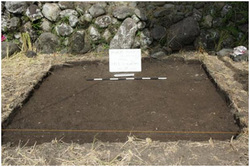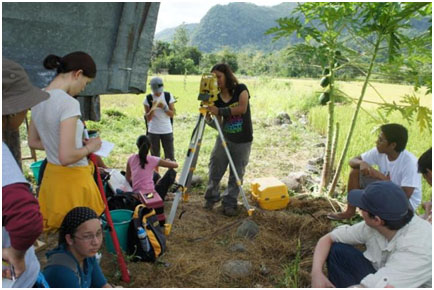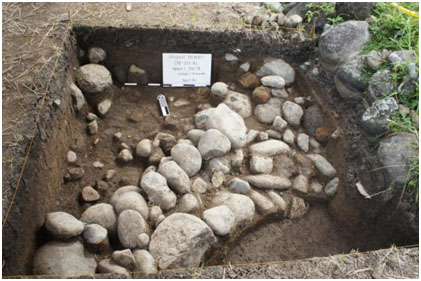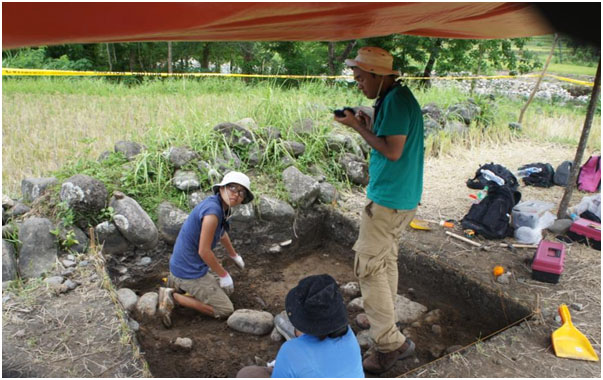|
Kiangan, Ifugao I initially planned to update this blog daily, but whole day work in the field and full internet cafes (and slow connection) make it difficult to accomplish. So, here's the first brief report of the Ifugao Archaeological Project.  Participants and partners of the Ifugao Archaeological Project. (Front,L-R: Marlon Martin, Eulalie Dulnuan, Stephen Acabado, Kate Tantuico, Marian Reyes, Jacy moore, Mariana Sanders, Vanessa Cabrera; 2nd Row, L-R: Mikhail Echavarri, Eugenie, Charmaine Ledesma, Noel Amano, Marie Sioco, Regina Nunez-Oballes, Narae Lee, Baki Rodolfo Dulnuan, Maddie Yakal, Lun Votey, Mita Moung, Jay Villapando, Joff Martinez, Ana Labrador Participants and partners of the Ifugao Archaeological Project. (Front,L-R: Marlon Martin, Eulalie Dulnuan, Stephen Acabado, Kate Tantuico, Marian Reyes, Jacy moore, Mariana Sanders, Vanessa Cabrera; 2nd Row, L-R: Mikhail Echavarri, Eugenie, Charmaine Ledesma, Noel Amano, Marie Sioco, Regina Nunez-Oballes, Narae Lee, Baki Rodolfo Dulnuan, Maddie Yakal, Lun Votey, Mita Moung, Jay Villapando, Joff Martinez, Ana Labrador June 13, 2012 Today marks the first week of excavations in the Old Kiyyangan Village, Kiangan, Ifugao by the Ifugao Archaeological Project (IAP) crew . The IAP was formally launched June 6, 2012 with a customary Ifugao ritual. Mumbaki Rodolfo Dulnuan of Mungayang village led the ritual to appease the pinadin (spirits) of the excavation site. The launching was attended by Ana Labrador (Assistant Director of the National Museum of the Philippines), Marlon Martin (Chief Operating Officer, Save the Ifugao Terraces Movement), Eulalie Dulnuan (Executive Administrator, Local Government of Kiangan), Giovanni Bautista (Cultural Properties Division, National Museum of the Philippines), Patrick Polpog (Branch OIC, National Museum, Kiangan Branch), Eugene Baguilat (landowner), and representatives of the local community).  Trench 2, Old Kiyyangan Site, Baguilat Property. Trench 2, Old Kiyyangan Site, Baguilat Property. June 7, 2012 The IAP crew opened up two units in the southeast corner of the Old Kiyyangan Village, within the property of Mr. Eugene Baguilat. These two units are located in the lower part of the site, and adjacent to Ambangal River, a tributary of the Ibulao River which lies to the West of the site. The two units (Trench 1 and Trench 2) were opened to look at paleosols to obtain information needed to reconstruct the pre-rice vegetation and landscape of the site. The crew was divided into three (3) groups, two were assigned to excavate Trenches 1 and 2, while the third group was assigned to map the site using a Total Station. The first day of excavations was slow, the two excavation teams were only able to uncover one level (0-10cm DBS). However, Level 1, which is considered part of the agricultural soil, provided a heap of earthenware sherds -- presumably, those of the rice cooking type (banga). A few stoneware and Chinese ceramics were also recovered. June 8 and 9 The second and third days of the excavations were uneventful, and the team was caught by a heavy downpour in the afternoon of June 8. June 11 and 12 We started the week with a new unit (Trench 3), located directly south of the present granary. The purpose of this unit is to expose possible habitation site (based on oral history and known Ifugao settlement pattern. A shovel test trench was also dug adjacent to Trench 3. A significant discovery was unearthed in Trench 1, a buried rice paddy wall was exposed within Level 3 (20-30 cm DBS). This wall might provide support to oral historical accounts that the Old Kiyyangan Village was abandoned sometime during the late 1800s. Explanations for the abandonment range from "poisoned water", to cholera epidemic, to the Spanish Reduccion. The excavation team will continue to expose this feature. Other findings during this period include a potter's anvil (recovered from the shovel test trench),faunal remains (deer, carabao, pig bones), human teeth (juvenile premolar and adult incisor), slingshot stone, and a significant number of water jar sherds (Trench 3).
1 Comment
|
Stephen AcabadoI am an anthropological archaeologist interested in human-environment interactions Archives
June 2012
Categories
All
|








 RSS Feed
RSS Feed
